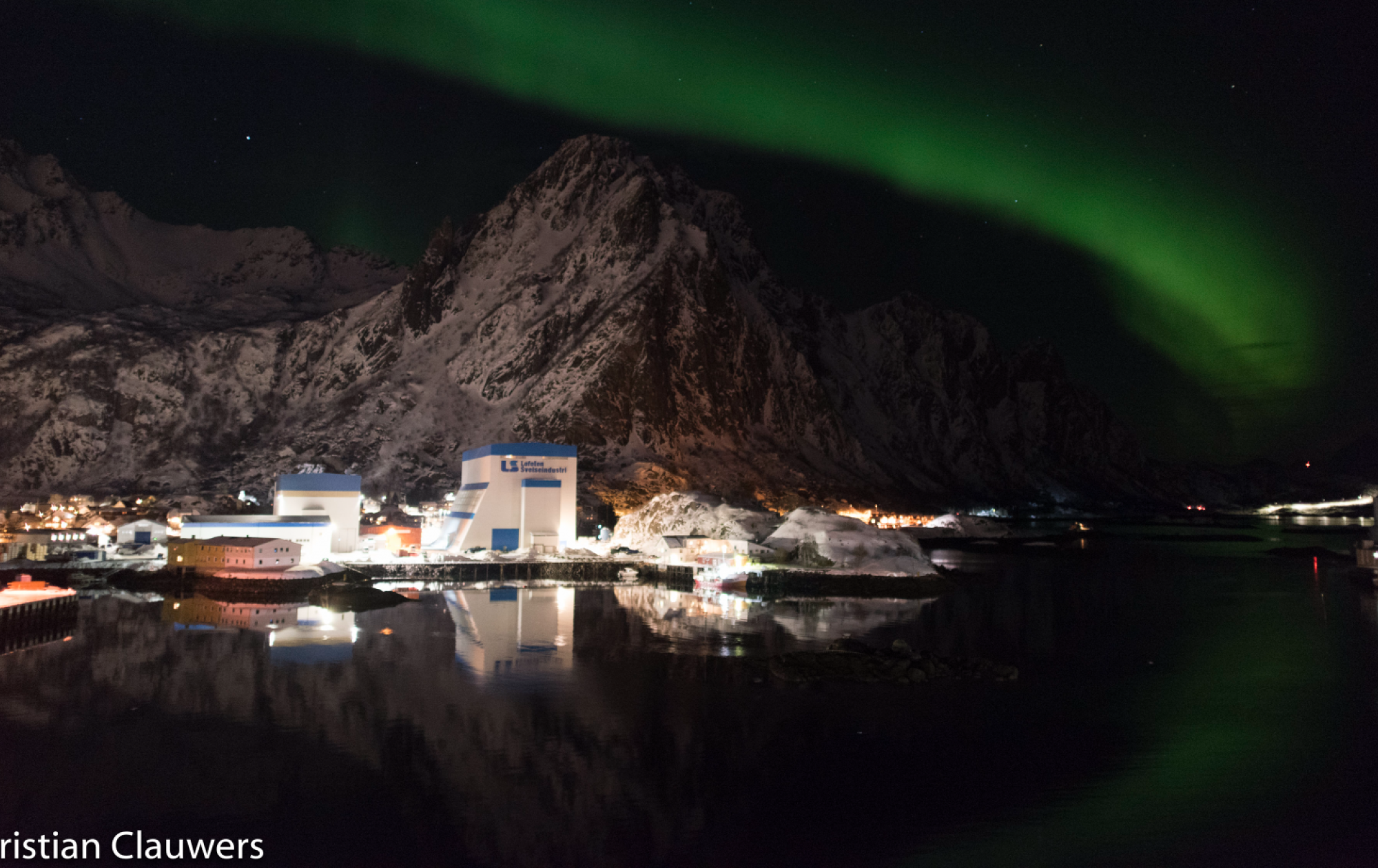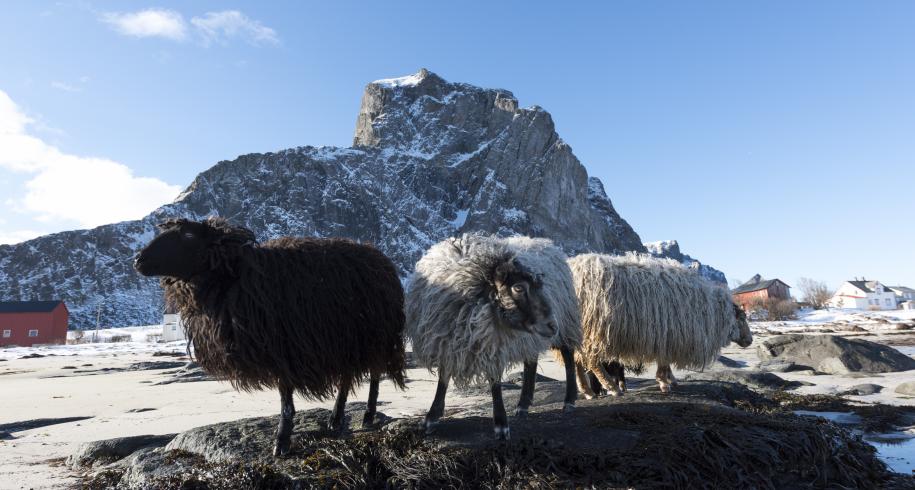
Creating Lofoten - The Green Islands
The Lofoten archipelago stretches out from the Norwegian coast like an arm reaching out into open ocean. It is a gem of islands and alpine mountains far out in an ocean full of marine life and opportunities. Together with the privat and public sector, we aim to build the world's cleanest island community.
Av Laura Johanne Olsen
The Lofoten islands are a set of thriving coastal communities in North Norway traditionally based on coastal fisheries. The islands also face challenges from heavy climate gas emissions from transport, damaging distress on nature, and vulnerabilities to climate changes.
The oceans surrounding Lofoten bring about abundant marine biodiversity, prosperity on land and have always been a true adventure. The mountains cut straight into the ocean. The wealth from the ocean has formed traditions and built a cultural heritage, which is known worldwide. Henceforth, these fishing villages are also founded on tourism, aquaculture, agriculture and service industries. Not all of the Lofoten islands are connected to the mainland by road, but indeed they all have a world class business sector and attractive places to live across generations. Urban life is merely a stone throw from untouched nature.
The Lofoten islands are committed to the green transition. The development of low emission island communities in Lofoten relies on close cooperation between public and private sector, between traditional and modern industries, and between entrepreneurs, youth and all citizens. The Lofoten regional political council; Lofotrådet, the regional energy and grid company; Lofotkraft, and the regional destination company; Destination Lofoten have formed a partnership to take a lead on sustainable and low emission development. The work is led with the vision that Lofoten in the future will be powered by renewable energy, be a lovely place to live, with a thriving business sector both sustainable and viable. Lofoten will contribute to achieve the UN climate goals
The Roadmap for Lofoten – The Green Islands
The Roadmap for Lofoten – The Green Islands is governed by the premise that it provides opportunities and support for Lofoten in the Green Shift - as a community and place for business and recreation, i.e. green restructuring and local green value creation. It aims to minimize the barriers that slow down the Green Shift, making it easier to choose green solutions for the future. The roadmap shall not prohibit, ban or punish those who do not wish to take the lead in green restructuring. But it will allow for and support new opportunities so that municipalities, businesses, local inhabitants and visitors can lead the way towards sustainable development and value creation in Lofoten.
Lofoten – The Green Islands 2030 is a pilot program that puts young people in the driver’s seat for the Green Shift and sustainable development of Lofoten and beyond. The roadmap shows the way to cooperation and interaction, for a Lofoten that is diverse, contrasting and a prosperous place to live and visit. The roadmap will lead Lofoten towards the best solutions for a viable future and promote green growth through the sustainable use and management of Lofoten's qualities and resources.
Among the overarching ambitions, Lofoten aim to be a catalyst and active enabler for those who want to take the lead in the Green Shift, to develop Lofoten as a low emission society within 2040, and to be a platform for active youth participation and engagement. The ambitious program is organized in six program areas, as follows; environmental criteria in public procurements, zero-emissions transport zones, renewable and low-emission destination, low-emission coastal fishing, aquaculture and agriculture, and low-emission aviation. This program aims to achieve the full potential of interaction; regionally and among public and private enterprises, visitors and local communities.
Food from Lofoten
Coastal fisheries
The Lofoten islands are an interlinked part of the valuable and vulnerable marine ecosystem amid the Vestfjord basin, the Atlantic Ocean Current (Gulf Stream) and the Norwegian Coastal Current. The continental shelf meets the Norwegian coast relatively close to the Lofoten islands. North of the islands the distance is less than 10 km from shore to the continental shelf, where the ocean suddenly deepens down to 3000 meters and more. The upwelling from the deep sea brings nutritious food into the mix of warm, saline currents from the south and fresh, cold currents from the north.
The first settlers in Lofoten came after the last ice cap withdrew 10 000 years ago, and lived on hunting, gathering and coastal fishing for cod and other species. The Vikings in Lofoten hung fresh codfish to dry in the perfect winds and temperatures of springtime, producing what is now known as stockfish. The Vikings used stockfish both as provisions on their long journeys at sea and as currency when trading on international markets.
Currently, the Lofoten fisheries are the world’s biggest cod fisheries. It takes place every year between January and February when the globetrotting Gadus Morhua codfish, or “skrei” in Norwegian, come down from the Barents Sea to spawn in Lofoten. Fishing boats from all over Norway come to the Lofoten islands for income and value creation, but also for being part of the historical tradition of harvesting and processing codfish. And still today, following the Lofoten fisheries the codfish is hung to dry from large racks and eventually exported to European and African markets as stockfish. In April the Lofoten islands reek of outdoor fish drying racks, and it reeks of money they say. If not hung to dry, the codfish is processed and exported as fresh or salted fish to various markets in Europe and elsewhere.

Aquaculture and agriculture
The Lofoten oceans are excellent locations for producing seafood. One of the islands’ family-owned businesses expanded in the 70s from codfish processing to the pioneering development of salmon aquaculture. Today they load more than 2,500 semitrailers full of salmon a year and serve the European and international markets with healthy food from Lofoten. Altogether, there are various aquaculture companies in Lofoten that build on a proud tradition of seafood production and advanced technological development from research and innovation to seafood harvesting and processing.
The nearshore farmland creates unique feeding grounds for breeding animals, which particularly sheep seem to enjoy. Lofoten offers farm visits with food tasting, high-end dining restaurants, and a great selection of locally produced food of exceptional quality from the islands. You may order Lofoten lamb, fresh cod, a variety of homemade cheese, berries and vegetables according to season and, of course, a grand selection of high-quality stockfish.

Visting Lofoten
Summer
The alpine coastal landscape of Lofoten invites tourists to explore the fishing villages, Viking era, cultural events and sites. But most of all, visitors to Lofoten are spellbound by the Midnight Sun that never sets. During summer, officially between 28 May to 14 July, the Midnight Sun casts a white, orange light on the islands that is full of magic energy and power. Inhabitants and visitors alike are attracted by the Midnight Sun in the north and tend to enjoy the hikes and beaches all night long. However, a good night’s sleep is essential for relaxation and recreation. Lofoten offers a variety of accommodation from traditional fishermen’s cabins to luxurious hotel suites.
Winter
Winter in Lofoten is also exciting as it offers another set of colors in the lack of direct sunlight. The sun dips and stays below the horizon between early December and early January. In this period the sky is painted with a palette of deep reds and cold blues until the clearest pastel colors. The days are short but filled with the biggest variety of colors you could imagine. You can enjoy snow, cross country and randonée skiing in “the blue hours” of soft colors before the Northern Lights flare across the sky. And suddenly disappears.
Sustainable destination
You are invited to enjoy the opportunities that the Lofoten nature and people living there offer within the framework of sustainable tourism. In Lofoten, the value creation from tourism will be guided by the limits of what nature and society can tolerate. Lofoten will deliver sustainable experiences in nature zones, culture, food and good encounters with the local community. Lofoten will be Norway's most climate-friendly, resource-smart and renewable travel destination by 2030 and will offer visitors emission-free public transport options.

The Lofoten way
Lofoten currently faces a number of challenges related to sustainable management of natural resources, damaging and harmful influences on nature, negative population growth, the need for year-round jobs and increased business development on the path to a low-emission society.
A robust foundation has been built for regional cooperation in Lofoten through this strategic program of Lofoten the Green Islands 2030. Our combined strengths and willingness to lead the way can make Lofoten a green, competitive and sustainable community in the long term. Our goal is to help the region reach the UN Sustainable Development Goals, stimulate business and green competitiveness, and at the same time develop a sustainable local community. This will ensure a good and viable home and place of work for the inhabitants of Lofoten in the future.
Lofoten – The Green Islands is merely at a starting point, although a lot of strategic work has been done. This program, nevertheless, puts Lofoten at the international forefront of private-public cooperation and leads the way to sustainable and low-emission island development by generating new tools in the sustainable development of island communities.